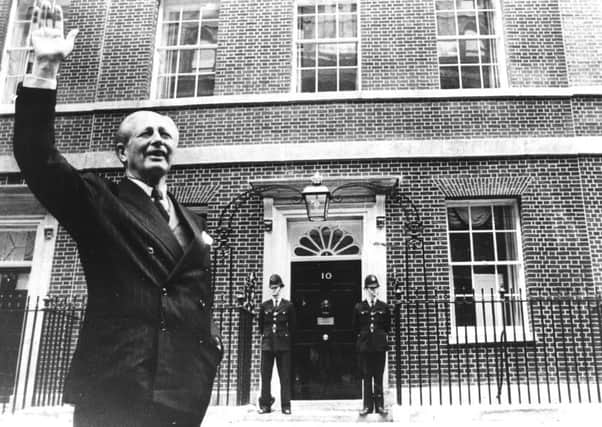Papers reveal how close Downing Street came to being demolished


But previously unseen documents show when the prime ministers inhabiting the dilapidated seat of power were asked to decide how to carry out the works – and, crucially, how much they should cost – securing agreement was somewhat harder.
Files extending over nearly two decades released at the National Archives in Kew, west London, show how the administrations of successive prime ministers from the end of the Second World War struggled with the question of how to furnish and rebuild dark brick buildings behind the world’s most famous front door. The rows ranged from the scathing judgment of experts, including Britain’s most eminent architecture academic Sir Nikolaus Pevsner, that No.10 had been furnished with fake antiques under the reforming Labour government of Clement Atlee.
Advertisement
Hide AdAdvertisement
Hide AdThe root of the problems lay in the shaky foundations of the buildings originally put up in 1686 on the orders of Sir George Downing, the miserly and brutal statesman whose name was immortalised as the seat of British prime ministers. Such was the extent of the structural defects – it was found the entire front wall of Number 11 had subsided so much on Sir George’s inadequate foundations that it needed to be taken down entirely – that a Cabinet report in 1955 suggested it would be simpler to demolish and replace the street. The secret memorandum presented in the final days of Winston Churchill’s second stint in No.10 stated gloomily: “It would be more straightforward to pull down all the houses and put up modern buildings. We could certainly get more accommodation if we did. But the houses in Downing Street are deeply embedded in our history. To destroy them would be an act of impiety.” Instead, it took another three-and-a-half years before Conservative PM Harold Macmillan moved out of Downing Street and into nearby Admiralty House to allow the extensive works, which included fashioning a “good modern flat with a view over St James’s Park” for the Chancellor of the Exchequer, to begin.
When it was revealed the cost of the project, which also included restoration of the war-damaged Cabinet Office behind Downing Street, had risen to £1.6 million – equivalent to £35m today – from £1.25m, Macmillan had a blunt verdict. Writing in the margins of a 1961 memo, he said: “This very bad. It think [the cost rises] show what is wrong with this country.”
When a year later, it emerged that the cost had risen still further to £2.5m amid a dispute with the project’s architects about how faithfully No.10 should be restored to its neo-classical splendour, Macmillan wrote: “This is a terrible story, but makes it all the more necessary that the architect’s furnishing and decorating extravagances should be curbed.” The documents show such concerns did not greatly affect some of the austere Tory prime minister’s predecessors. In the immediate aftermath of the war, the Ministry of Works had set about buying furnishings to restore the showpiece “state rooms” inside No.10, with £700 – equivalent to £23,000 – spent on a single desk.